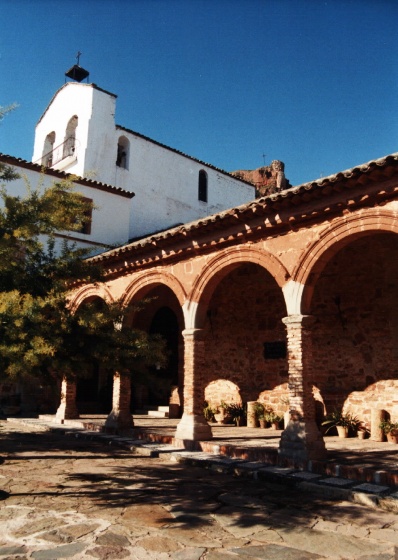Iglesia de Santa María del Collado
Monument
, Santisteban del Puerto
Originally it must have been a Visigothic temple, as can be seen in the medillones that adorn the back of the temple and some that are preserved in the apse. Also in the Visigothic period there is a holy water font.
In the 13th century, during the reign of Ferdinand III (1217-1252) or that of his son Alfonso X (1252-1284) the columns were used to make a fully Romanesque church with three naves and a sanctuary with three semicircular apses.
The portico is also of Romanesque design, although in it you can already see the pointing of the exterior arches, a characteristic of the period of transition to the Gothic period. The columns inside the temple are of cylindrical shaft and base imitating the old Attic with the circular molding and the square painting. The capitals are exquisitely carved and present a great variety of motifs, from geometric figures and plant ornaments of leaves, rosettes and fruits, to figures of animals such as lions, bulls, fish, goats and as well as human figures.
The arches are pointed and the ceiling presents in the part corresponding to the transept, a large stone edge vault and in that of the naves a wooden coffered ceiling. At the entrance to the presbytery there are two half columns with capitals with sawtooth ornaments, which support a large opival arch.
Towards the 16th century, the church enclosure was expanded on the old layout, surely due to greater needs for worship. Also in the 16th century the artistic altarpiece of the High Altar was added, which serves as an opening to the Virgin's dressing room.
Another highlight are the gate and choir stalls, both in Plateresque style. Its gate is adorned by a series of columns where there are carved various ornamental motifs, such as human and animal heads as well as clusters of fruits.
The capital of these columns is of the Ionic style. In the upper door of the entrance door to the choir there is a large shield with the arms of Don Francisco Delgado, who was prelate in Jaén from 1566 to 1576. The choir stalls are preserved in good condition and all its chairs are topped with a half shell. and separated from each other by columns, where the same themes of the columns of the gate are carved and, as in this one and on the central chair, are the arms of the Bishop of Jaén indicated above.
The lower part of the seats is also finely carved, featuring geometric motifs. On both sides of the choir there are as many chapels that have a wooden fence that is a continuation of the choir and with the same ornamental carvings.




